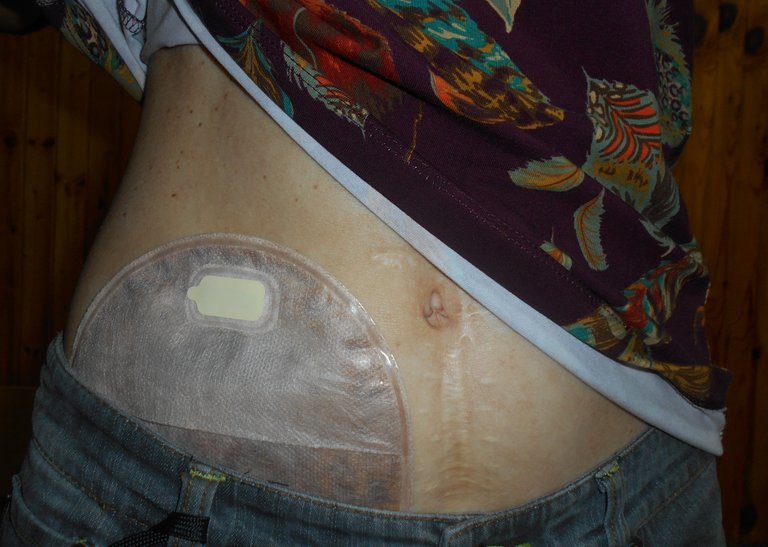Ostomy; The Artificial Opening of the Bowel
Let's do something a little different today, I will be looking at the artificial openings in the body. I will be talking about Ostomy, the artificial opening of the bowel/cervix. This could be the opening of the Colon in Colostomy, the Ileum in Ileostomy. The artificial opening known as the Stoma is an opening in the bowel and bladder. This surgery happens when there is a problem with the colon or the ileum and the inability to pass out waste.
Let's do a little bit of basic anatomy with digestion. When you eat, the food goes into your mouth where mastication occurs. This is done by chewing and manipulating food with the tongue, not forgetting the importance of saliva which is provided by the parotid gland, submandibular gland, and sublingual gland. The food is swallowed and goes through to the pharynx, then to the oesophagus. The Esophagus, also known as the Oesophagus, is a tubular digestive tract that connects the pharynx to the stomach. It is posterior to the sternum and posterior to the windpipe. The oesophagus secretes mucus which lubricates itself allowing food to pass through it. It transports food to the stomach. When you feel burning sensations in the chest when eating, it is a result of acid coming up from the stomach to the oesophagus.
The food goes to the stomach where digestion takes place. It is located in the upper left quadrant of the abdomen. The stomach's primary function is to store food, as well as chemical and mechanical digestion. The upper part of the stomach is made up of three parts; the cardia, body, and fundus, and the lower part is made of the pylorus and the antrum. The stomach produces hydrochloric acid (HCL), and Pepsin (breaking down protein) which helps in digestion. The stomach stretches to store more food, thanks to the gastric rugae. From the stomach, the food goes into the small intestine where digestion continues. The small intestine is divided into the duodenum jejunum and the Ileum. From the small intestine, the food moves to the large intestine. The Colon is made up of the ascending colon, the transverse colon, the descending colon, and the sigmoid colon. then to the rectum where it is then passed out.
A gastrointestinal Ostomy is required when there is an inability to pass out waste from the small intestine, or the large intestine. this opening is done towards the surface of the abdomen. It can occur either as a colostomy or an ileostomy. When there is an opening to the colon, bringing it to the surface of the abdomen, it is regarded as Colostomy. When there is a reason for a colostomy in the Ascending colon, it is known as an ascending colostomy. When it is in the Transverse region of the colon, it is known as the transverse colostomy, when it is in the Descending colon which is in the left part of the abdomen, then it is a descending colostomy, and when it is in the sigmoid part of the large intestine, at the left lower area of the abdomen, it is known as a sigmoid colostomy.
According to an article where 216 patients were analyzed, 50.5% of the group were females and 49.5% are males. about 23.6% of them were aged 60 -69 years, and the average age of patients who underwent an Ostomy is 51.3 years. 89.4% of the patients had colostomies performed on them, and 56.9% of them had temporary ostomies.
An ileostomy is the creation of a surgical opening, for the purpose of allowing waste to leave from the ileum (which is at the right lower quadrant of the abdomen) as a result of a blockage. Patients with Crohn's disease, ulcerative colitis, Diverticulitis, Ischemia, Colon Cancer, Bowel Blockage, can cause colon issues which could lead to blockage of the bowel, and irritating the bowel. It is important to know that the colon absorbed nutrients and fluid out of the food that we eat, and gets rid of waste. The stoma after an Ileostomy is spouted while the stoma around the skin in the case of colostomy is flat. The waste that comes out of an ileostomy is often liquid because fluids are usually reabsorbed in the large intestine. The Spout of the Ileostomy allows it to pour out its waste into the tight-fitting stoma bag.
Gastrostomy is another surgical opening that requires inserting a tube (G-tube) into the stomach through the abdomen. It is used to put food into the stomach rather than put things out. It is basically used for children who require an intestinal transplants, as they cannot meet their nutritional needs by mouth. When a gastrostomy is fitted during an endoscopic procedure is called Percutaneous endoscopic gastrostomy (PEG).
Urostomy is the surgical opening in the bladder, where urine is emptied through rather than the urethra.
Medications for Ostomy taken through the mouth may not be effective, as it can be difficult to absorb and increase the frequency of bowel movement. Others may cause complications such as urinary stones. Depending on the type of pouch system, most people will change their bags within three to seven times daily.
Reference
https://www.ncbi.nlm.nih.gov/pmc/articles/PMC6044200/
https://www.ncbi.nlm.nih.gov/books/NBK482513/
https://www.ncbi.nlm.nih.gov/pmc/articles/PMC4864340/
https://www.ncbi.nlm.nih.gov/books/NBK537103/
https://www.ncbi.nlm.nih.gov/books/NBK482334/
https://www.cancer.net/navigating-cancer-care/how-cancer-treated/surgery/types-ostomy/urostomy
https://my.clevelandclinic.org/health/treatments/22496-ostomy

Thank you for sharing this important information. I have seen patients with colonostomies, more rarely ileostomies or stomas, quite frequently a few years ago.
But of course a colonostomy implies a greater care, besides the fact that psychologically it affects much more, because the waste is expelled through another side, which physically and psychologically will change many things for the person who has it.
Fortunately, in a great number of cases, the intestinal transit can be restored.